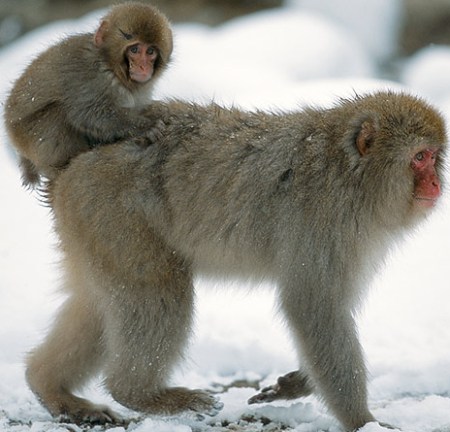Some people are content to own regular pets such as cats, dogs, birds, and gerbils while others prefer the more exotic, such as chinchillas, sugar gliders, monkeys, pythons etc., wanting the status of having owned an exotic animal.
It is the owner’s choice if they want to take on the many responsibilities that are involved in taking care of an exotic animal. And for those who seek the exotic, unusual and lavish, these pets can help fulfill that desire while adding to one’s status symbol.
There are many exotic pets that are legal to purchase [some even require special licensing] under the correct circumstances, ranging in price from approximately $800 to $138,000.
Most of them are available whether you are rich or poor, however all of these pets demand high attention and lots of time.
Bengal Cat

No relation to the Bengal tiger, the Bengal cat is a hybrid creation featuring pre-designed genetic characteristics that are crossbred with the likes of something more exotic, such as the Asian leopard cat.
The Bengal cat is a fun loving, always on the go cat that you won’t find resting very often.
The result is a new feline breed that acts much like a mellow domestic, but looks like he just walked off the Savannah plains.
Savannah Cat

Bred in a similar process to the Bengal Cat, the Savannah Cat is bred by mating the African Serval with a smaller domestic cat.
The Savannah inherently has a much more difficult breeding process, because an African Serval is 40lbs and undomesticated and breeding it with a domestic house cat is problematic.
Concurrently, the gestation periods between the two animals are different.
Chinese Crested Hairless Puppies

These chinese crested hairless puppies weigh about 5 to 12 lbs and are very vivacious, alert and friendly animals. Considered to be one of the rarest dogs, these dogs are prone to sunburning on a hot and clear day.
The dogs first originated in Africa and the animals is most often found to be a very pleasant companion that lives for over 10 to 12 years.
Hyacinth Macaw

The hyacinth macaw weighs in at four pounds, and the world’s largest parrot species also enjoys a tremendous four-foot wingspan.This South American native mates for life, is easily domesticated and will probably outlive you. In the wild, he eats the nuts from two kinds of palm trees, but one of them, the acuri, he only eats after it has passed through the digestive system of another animal.
Kinkajou

This nocturnal rain forest mammal is friendly and affectionate by nature and, therefore, enjoys some popularity among exotic-pet owners.
Despite their sharp, carnivorous teeth they eat bananas, eggs, mangoes, fruit loops, marshmallows, and gummi bears. This preserves their wicked, bacteria-loaded bite for when threatened or scared.
Sugar Glider

These popular little nocturnal marsupials from northeast Australia weigh no more than about five ounces.
Their lively and curious nature helps them to bond easily with humans. Unfortunately, they’re also social and nocturnal, and want your attention when you can’t give it - at night.
For that reason, it is recommended that you keep at least two.Owners should also provide an environment with branches or vines to satisfy the sugar glider’s desire to climb.
Snow Macaque

The Japanese Macaque, also known as the Snow Monkey, is a terrestrial Old World monkey species native to Japan.
The Snow Macaque is considered a threatened species as we continue to encroach on more and more of the animal’s habitat. Due to this fact, coveted licenses and special permits are mandated to own this very rare animal.
The Snow Macaque is a smaller primate with a lifespan of over 25 years with the distinguishing feature of a hairless red face.
Squirrel monkey

Hailing from Central and South America, the squirrel monkey is omnivorous, measuring in at about 2.75 pounds; they have a number of predators, which is one reason they run with a posse that can number as high as 500.
Speaking proportionately, they have the largest brain of all the primates (that includes humans). Couple that intelligence with a social and affectionate nature, and things like house-training come relatively easy to this monkey.
Mona monkey

This West African native is an Old World monkey who peaks out at about 15 pounds and lives into his early 20s.
Like any other monkey, this mona monkey also needs to move those crazy limbs. Owners should provide them with an enclosure that permits climbing, swinging, goofing around, and even hiding.
The most difficult job may be monkey-proofing your home, since he can outsmart or out-jiggle most baby-proof methods.
Chimpanzee

Eerily analogous to humans in life span, behavior and even DNA (we share 94%), chimps have a hold on human fascination and attract the likes of scientists, zoo-goers and potential pet owners.
This remarkable similarity also hints toward why they make for such problematic and unmanageable pets. Chimpanzee can be house-trained, but he’s intelligent enough to have a mind of his own. If he wants to raid the fridge, but fails to outwit you, his 115-pound frame has another option- take it by force.
His average upper-body strength is five times that of a human. With a more sophisticated gripping capacity he could show you up at the gym, but why bother? He can just maul you to death.
Chinchilla Lanigera

Chinchilla’s lifespan is typically about 15 years, but 18-22 years is not uncommon. Its Body length is about 10-14 inches; tail is another 5-6 inches or so.
With gentle handling from a young age most chinchillas will become quite tame and bond closely with their owners, although sometimes they do not like to be held or cuddled.
They are very active and playful. Chinchillas can be kept singly, and usually will do fine as same sex pairs especially if they are littermates or introduced at a young age.
White Lion Cubs

According to Forbes (America’s Priciest Pets), as a pet this cub is the world’s costliest animal. The white lion is not a species unto itself; he’s your standard lion with a potentially fatal flaw. The flaw is a recessive gene that alerts both potential prey (wildebeests, hippos and adult elephants) as well as predators (hunters) to his presence.
The problem with raising a cub is the same as raising some puppies — they grow up. In the case of a white lion, that can mean reaching 500 pounds.
Ball Python

There are two types of people: those who like snakes as pets and those who don’t.
It’s doubtful that the red eyes or exotic colors of some of these rare variations will entice the uninterested.
After all, ownership in this case means keeping your 5-foot-long ball python in a 30 gallon tank and feeding it dead mice, rats or gerbils every 10 days for the next 30 years.
Reticulated Python

Hailing largely from Thailand and Indonesia, reticulated pythons represent the longest known species of snake in the animal kingdom.
How do you keep this monster happy? Start with a fairly large tank for a habitat in which humidity levels and high temperatures must be regulated with some discipline.
Breeders recommend getting a second person to help you feed your reticulated albino type II tiger python ; someone needs to call an ambulance when it mistakes you for a carcass.
Lavender Albino Python Female

This Albino is very different from the more common form of albinism. The white areas have a nice lavender color and the eyes are a very deep, ruby red. The trait is a simple recessive and is represented in captivity at this time.
Also available from python breeder Bob Clark, the rarity has fueled demand.
Leopard Gecko

Leopard geckos may live about 20 years. Leopard geckos reach approximately 8-10 inches in length.
Leopard geckos are commonly yellow and white with black spots (hatchlings start out more striped, and gradually change to the spotted appearance). There are several color and pattern (e.g. jungle) variations.




































 A 16 year old Florida boy got stopped by police for doing 107mph in a 55mph zone. He hasn’t been to court yet, but he’s begun serving the sentence ordered by mom. In addition to having his car taken away, Adam Clark stands along the road near his high school wearing a sign that says “I was stupid. I drove over 100mph and got caught. Thank God! I could have killed me and my friends.” I doubt Adam will ever forget the incident, and hopefully will think twice before putting the pedal down when he gets his car back. Mom says he’ll be out there every day before and after school for the rest of the month. Some will whine that it’s cruel, but I believe if more parents took an approach like this the courts and jails would have a lot more vacancies. Good job mom!
A 16 year old Florida boy got stopped by police for doing 107mph in a 55mph zone. He hasn’t been to court yet, but he’s begun serving the sentence ordered by mom. In addition to having his car taken away, Adam Clark stands along the road near his high school wearing a sign that says “I was stupid. I drove over 100mph and got caught. Thank God! I could have killed me and my friends.” I doubt Adam will ever forget the incident, and hopefully will think twice before putting the pedal down when he gets his car back. Mom says he’ll be out there every day before and after school for the rest of the month. Some will whine that it’s cruel, but I believe if more parents took an approach like this the courts and jails would have a lot more vacancies. Good job mom!


